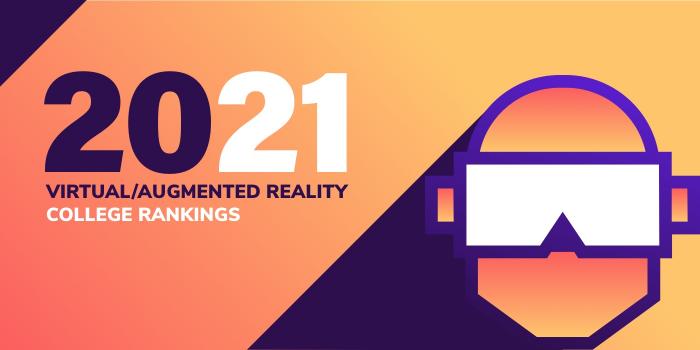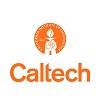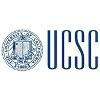
Did you know? Savannah College of Art and Design offers AR/VR resources, a green screen, a motion media lab, more than 800 computers networked to reduce render times, and immersive reality classrooms. Learn more.

| Ranking | School | State |
|---|---|---|
| 1 | Stanford University | California |
| 2 | University of Southern California | California |
| 3 | University of Washington | Washington |
| 4 | California Institute of Technology | California |
| 5 | University of California, San Diego | California |
| 6 | University of California, Berkeley | California |
| 7 | University of California, Santa Cruz | California |
| 8 | University of California, Santa Barbara | California |
| 9 | Lake Washington Institute of Technology | Washington |
| 10 | Chapman University | California |
Our 2021 list of the Top 10 AR/VR Programs in the West. For an explanation of our ranking criteria, click here.

Founded in 1885 and serving more than 15,000 students, Stanford University consists of seven schools, along with dozens of labs, centers, and institutes. The School of Engineering houses the Computer Science (CS) Department (est. 1965), which offers BS, MS, and PhD programs. A CS Minor is also available.
Department course highlights include How to Make VR: Introduction to Virtual Reality Design and Development, Coding for Social Good (VR component), Interactive Simulation for Robot Learning, Computer Graphics: Animation and Simulation, Character Animation: Modeling, Simulation, and Control of Human Motion, Topics in Computer Graphics: Agile Hardware Design, and Physically Based Animation and Sound. The graduate program highlights nine predefined specialization options. Examples include Artificial Intelligence (AI), Human-Computer Interaction (HCI), Real-World Computing, and Systems.
In addition to offering a variety of specializations and heavy AR/VR coursework, the CS Department houses research groups in the areas of AI, Computer Graphics/HCI, Robotics, Foundations of Computer Science, Scientific Computing, and many others. “Basic work in computer science is the main research goal of these groups,” says the school “but there is also a strong emphasis on interdisciplinary research and on applications that stimulate basic research.”
CS students interested in AR/VR have additional opportunities to collaborate on projects and enhance their skills through several centers and labs. Options include the Center for Computer Research in Music and Acoustics (CCRMA) Virtual + Augmented Reality Design Lab, the Virtual Human Interaction Lab (VHIL), and the School of Medicine’s Medical Neurosurgical Simulation and Virtual Reality Center and the Virtual Reality & Immersive Technology Program.
Pronounced "karma" (the first "c" is silent), the CCRMA Virtual + Augmented Reality Design Lab “conducts research in the artful design of virtual, augmented, and mixed reality (VR, AR, XR) for music.” The lab also supports collaborations with Computer Science, Art and Art History, and Communication at Stanford, as well as research projects in the CCRMA community.
Founded in 2003, the VHIL studies the psychological and behavioral effects of AR/VR. Just a few of the lab’s current projects include Psychology of Augmented Reality, Virtual Becomes Reality – Immersion and Presence, Medical Virtual Reality, Integrating VR into Classrooms and Curricula, Telepresence, and Design Thinking.
The Medical Neurosurgical Simulation and Virtual Reality Center opened in 2016. It is the “first institution in the greater Pacific Northwest to use patient-specific, 3-D virtual reality (VR) technology across the neurosurgery clinics, operating room, and classroom.” The Center is also one of the “first functional neurosurgery and spine clinics in the world to use patient-specific, 360-degree virtual reality for direct patient engagement.” To date, more than “1,100 Stanford neurosurgery patients have had Surgical Theater 360 VR at some point during their care.”
The Virtual Reality & Immersive Technology program at Stanford is the “first clinically focused academic endeavor dedicated to studying immersive technologies” such as AR/VR “in mental and behavioral health settings in a broad range of disciplines.” The program also manages the Virtual Reality & Immersive Technology (VR-IT) Clinic, which “incorporates the most current and emerging methods of virtual and augmented reality treatments into traditional cognitive behavior and mindfulness-based therapies, taking a holistic, customized, and personal approach to each patient.”

The University of Southern California (USC) opened in 1880 with just 53 students. Today, the school serves 46,000 students across 22 schools and units. Founded in collaboration with the Academy of Motion Picture Arts and Sciences in 1929, the USC School of Cinematic Arts houses the Interactive Media and Games Division, which offers a BA Interactive Entertainment and an MFA in Interactive Media.
In the BA in Interactive Entertainment Program, students learn about AAA development processes along with experimental and indie “genres of play, from virtual and alternate realities to expressive and meaningful games,” says the school. Course highlights include Reality Starts Here, Alternative Control Workshop, Producing Interactive Projects, Digital Media Workshop, and Video Game Programming.
The MFA in Interactive Media is a competitive program that admits just 15 students in the fall semester only. Program highlights include the opportunity to take twelve 500-level elective units, access to state-of-the-art computer and digital production facilities, and a mandatory internship or summer job in a professional environment.
MFA students can expect to take courses such as Experiments in Interactivity I & II, Foundations of Artificial Intelligence (AI), Interactive Design Production, Motion Capture Fundamentals, and Tangible and Spatial Computing. To enhance this coursework, students in the MFA (and BFA) program can study AR/VR through the USC Institute for Creative Technologies (USC ICT), which houses the Medical Virtual Reality Lab (MedVR Lab), Mixed Reality Lab (MxR), and the ICT Virtual Humans Group.
Areas of specialization for MedVR Lab include Game Based Rehabilitation, Virtual Humans, Neurocognitive Assessment and Training, and Mental and Behavioral Health.
The MxR Lab works with the Interactive Media and Games Division at the School of Cinematic Arts to “improve the fluency of human-computer interactions and create visceral synthetic experiences,” by exploring different “techniques and technologies.” Lab “research and prototypes focus on immersive systems for education and training simulations that incorporate both real and virtual elements.”
The ICT Virtual Humans Group “advances research in computer-generated characters that use language, have appropriate gestures, show emotion react to verbal and non-verbal stimuli.” Research areas include Character Animation and Simulation, Integrated Virtual humans, MultiModal Communication, Natural Language Processing, Emotion, and Cognitive Architecture.

University of Washington (UW) educates more than 54,000 students annually. Founded in 1861, UW is one of the oldest universities on the West Coast. The school, which has three campuses in Seattle, Bothell, and Tacoma, houses 18 colleges and schools, including the College of Arts and Sciences, home of the Paul G. Allen School of Computer Science & Engineering.
The Allen School, which introduced the world’s first augmented reality capstone course in 2016, offers a BS in Computer Science (CS), a Combined BS/MS in CS also known as the Fifth Year Master’s Program, a Professional Master’s (PMP) in CS, and a PhD in CS. The BS/MS enables current and recent Allen School undergraduate majors to earn both degrees in approximately five years. All programs benefit from the Allen School’s research and innovation in AR/VR as well as Artificial Intelligence (AI), Human Computer Interaction & Accessible Technology, Machine Learning, Robotics, Computer Graphics, Vision, Animation & Game Science, and Ubiquitous Computing.
Course highlights include Advanced Topics in Human-Computer Interaction-HCI (Graphics & Virtual Reality), Artificial Intelligence (AI) I & II, AI-based Mobile Robotics, Computer Systems Architecture, Computational Fabrication, Interaction Programming, Advanced Topics in Digital Animation, Computational Complexity, Interactive Learning, and Neural Control of Movement: A Computational Perspective.
Students in all programs have the opportunity to work with an interdisciplinary team of faculty and peers in the UW Reality Lab. Launched in 2018 and housed in the Allen School, the Lab includes the Reality Studio, Reality Lab Incubator, and classes. In addition to advancing AR/VR research, Lab participants will work on projects in 3D computer vision and perception, object recognition, graphics, game science and education, distributed computing, stream processing, databases and computer architecture, and privacy and security.
Allen School CS graduates go on to work in the Arts, Education, Law, and many other areas.

California Institute of Technology (Caltech) is a science and engineering institute that manages the Jet Propulsion Laboratory (JPL) for NASA. The school also owns and operates large-scale research facilities such as the Seismological Laboratory and a global network of astronomical observatories, including the Palomar and W. M. Keck Observatories.
Founded as Throop University in 1891, Caltech sits on a 124-acre campus in Pasadena, California that houses 2,250 students and 300 faculty members. The school is divided into six academic divisions including Biology and Biological Engineering, Chemistry and Chemical Engineering, Engineering and Applied Science, Geological and Planetary Sciences, Humanities and Social Sciences, and Physics, Mathematics and Astronomy.
The Division of Engineering and Applied Science houses the Computing and Mathematical Sciences Department, which offers a BS, MS and a Minor in Computer Science (CS). Course highlights for the Department include Advanced Digital Systems Design, Computer Graphics (including Animation, HCI, and Modeling), Computer Language Shop, Digital Logic and Embedded Systems, GPU Programming, Machine Learning, Making Data Visual (including Virtual/Technological Media), Nonlinear Control, and Operating Systems.
Students in all CS programs have access to Caltech’s Virtual Reality Lab, where they can create projects, conduct research, and collaborate with peers. The Lab also houses Virtech—an “experimental platform for online education.” Virtech, which is also a part of the Center for Data-Driven Discovery at Caltech, give students the opportunity to create their own 3D content, collaborate, and more. Faculty utilize the platform for “online lectures, seminars, group meetings and discussion, and experiments with other online learning modalities and technologies.”

The University of California, San Diego (UCSD) was founded in 1961, but the campus that it sits on dates back to the late 1800s, when it was chosen as the location for a marine field station for zoologists at the UC Berkeley campus. The facility became a part of the University of California in 1912, and it was eventually named Scripps Institution of Oceanography. Today, UCSD is one of the nine campuses of the UC System and it supports a community of 35,000 students.
UCSD has seven colleges, including the Jacob School of Engineering—which houses the Computer Science & Engineering (CSE) Department. Program options include BS, MS, BS/MS, and PhD degrees in Computer Science (CS). A CS Minor is also available as well as a Virtual Reality App Development Certificate Program.
The Certificate Program covers which VR devices exist, how VR technology works, and how to write software (VR experiences). Students will learn “effective 3D interaction techniques to use VR applications, how to write VR applications in WebVR and Unity 3D, and what features make a VR application successful,” says the school. Course highlights include Creating Virtual Reality Apps, Computer Graphics, and How Virtual Reality Works.
CSE Department focus areas include Artificial Intelligence (AI), Human-Computer Interaction (HCI), Robotics, Programming Systems, Software Engineering, and Visual Computing (Computer Graphics and Computer Vision), to name a few.
Undergraduate CS students have access to the CSE Virtual Reality Lab (VR Lab). “The first of its kind at an American University,” says the school, the VR Lab “looks like a cross between a classroom and a tech pavilion at the annual Consumer Electronics Show in Las Vegas. There are virtual-reality headsets everywhere, and large flat screen 3D displays.” The Lab also houses the 300-member VR Club at UC San Diego.
CS and Certificate graduates are prepared for careers such as Software Developer, AR/VR Maintenance and Support, Graphics Engineer, XR Gameplay and Tools Engineer, VR Developer, VR Technician, Design/Graphics Engineer, and many others.

Established in 1868, University of California, Berkeley (UC Berkeley) offers more than 350 degree programs to nearly 22,000 students. Programs are offered in 14 colleges and schools that house dozens of departments. The Electrical Engineering & Computer Sciences (EECS) Department offers two different undergraduate degrees from two different colleges: the BS in EECS offered by the College of Engineering (CoE), and the BA in Computer Science (CS) from the College of Letters & Science (L&S).
Technical requirements in CS “are almost identical,” says the school. “However, breadth requirements and admissions processes vary significantly.” Course highlights for both programs include The Structure and Interpretation of Computer Programs, Designing Information Devices and Systems, Machine Structures, and Data Structures and Programming Methodology.
All EECS and CS students have access to the XR Lab@Berkeley—a Virtual, Augmented and Mixed Reality Laboratory (VR/AR/MR), the student-run Extended Reality@Berkeley (est. 2015), and the FHL Vive Center for Enhanced Reality, which sponsors research and “high-impact” applications in AR/VR and Artificial Intelligence (AI).
Collectively, the Labs and Centers at UC Berkeley “train new engineers in all aspects of Virtual and Augmented Reality, raise awareness about technology’s potential for humanity, and advance the field through state-of-art research and development initiatives.”
Graduates of the programs go on to work in a variety of environments and fields such as Computer Systems Design Firms, Computer Vision and Robotics, Artificial Intelligence (AI) and Machine Learning, Software Development, Defense, Production, Design, Entertainment, Healthcare, Engineering, Aerospace, and more.

University of California, Santa Cruz (UC Santa Cruz or UCSC) is part of the 10-campus University of California System. The school serves nearly 19,200 students enrolled in 130 programs in dozens of colleges and schools. The Baskin School of Engineering, Computational Media Department (CM) houses the BS and MS Programs in Computer Science, and the MS and PhD degrees in Computational Media.
Course highlights for the programs include, Introduction to Augmented Reality and Virtual Reality, Computer Systems and C Programming, Programming Abstractions: Python, Game AI, User Experience for Interactive Media, Software Engineering, Computational Media Methods, Artificial Intelligence (AI), Applied Machine Learning, Advanced Computer Graphics and Animation Laboratory, and Data Programming for Visualization.
Students will complete a variety of projects throughout all programs. In the final year, graduate students will complete a thesis OR additional project with written report.
Also housed within the Baskin School is the Cave Automatic Virtual Environment (CAVE) Lab. In the Lab, faculty and students have the opportunity to “create three-dimensional virtual environments that multiple users can interact with at the same time,” says the school. The facility houses a room-sized, advanced visualization system also called the CAVE, which “combines a high-resolution, stereoscopic projection and 3-D computer graphics to create a complete sense of presence in a virtual environment.”
Multiple users in the CAVE can become “fully immersed in the same virtual environment at the same time.” The CAVE Lab also features “moveable walls that allow the environment to be reconfigured for different applications,” along with “Mechdyne CAVE and FLEX technology.” The Unity development platform is used to create 3-D interactive environments.

Founded in 1891, the University of California Santa Barbara (UC Santa Barbara or UCSB) serves around 26,315 students enrolled in more than 200 graduate and/or undergraduate majors, degrees, and credentials in five schools. Programs for students interested in AR/VR include BS and MS degrees in Computer Science (CS) and MS and PhD degrees in Media Arts and Technology (MAT). The BS and MS Programs are offered in the College of Engineering’s Department of Computer Science. MAT Programs are offered jointly by the College of Engineering and the College of Arts and Letters.
The degree programs in the Department of Computer Science emphasize, “problem solving using computer program design, analysis and implementation, and includes a theoretical foundation as well as hands-on experience,” says the school. In addition, the Department offers advanced degrees and opportunities for research experience through five-year BS/MS programs.
Department course highlights include Automa and Formal Languages, Artificial Intelligence (AI), Computer Graphics, Machine Learning, Human-Computer Interaction (HCI), Translation of Programming Languages or Programming Languages, Perception, and Software Engineering.
The MS and PhD degrees in MAT “provide for an interdisciplinary experience, building on a core set of skills and knowledge, with an emphasis on research and collaboration in digital media systems, content, and interaction.” Students in these programs may focus on specific areas of emphasis, according to their backgrounds and career interests. In addition to AR/VR, examples include Multimedia Engineering, Visual and Spatial Arts, and Electronic Music and Sound Design.
Depending on the program, students have access to a number of labs. Among them are the UCSB Four Eyes Lab and The Research Center for Virtual Environments and Behavior (ReCVEB).
The USCB Four Eyes Lab is part of the Department of Computer Science and the MAT Program. The Lab focuses on research in Imaging, Interaction, and Innovative Interfaces. Graduate and undergraduate students, postdocs, and visitors work in areas such as Augmented Reality, Virtual Reality, Computer Vision, Mobile and Wearable Computing, Recommender Systems, Visualization, User Interface and Human-Computer Interaction (UI/HCI), and Data Mining/Machine Learning.
Examples of current research in the Lab include Sphere in Hand: Exploring Tangible Interaction with Immersive Spherical Visualizations, Enhanced Geometric Techniques for Point Marking in Model-Free Augmented Reality, Hybrid Orbiting-to-Photos in 3D Reconstructed Visual Reality, Gesture-based Augmented Reality Annotation, and Relative Effects of Real-world and Virtual-World Latency on an Augmented Reality Training Task: An AR Simulation Experiment.
The Research Center for Virtual Environments and Behavior (ReCVEB) is open to graduate students, postdocs, and faculty members. Established in the 1990’s, ReCVEB was designed for the use of virtual environments in psychological research. Today, the Lab includes a 30-by-30 foot open room and a tracking system, which allow for experiments in fully immersive walking VR. “As a multidisciplinary research center, ReCVEB combines the talents of researchers in a variety of disciplines and offers a unique environment for conducting research through the use of state-of-the-art immersive virtual environment technology.”
Other labs include the RE Touch Lab (Haptics, Robotics, and VR), Systemics Lab (Robotics, Interface Design, Sustainable Computing Paradigms), and transLAB (Worldmaking + Social VR, Immersion, Performative Interactive Arts).

Lake Washington Institute of Technology (LWTech) is the only public institute of technology in the state of Washington. Founded in 1949, LWTech offers 10 applied bachelor’s degrees, more than 40 associate degrees, and 80 professional certificates in 41 areas of study, including STEM-focused programs in Science, Technology, Engineering and Math.
The Department of Digital Gaming and Interactive Media offers AAS and BAS degrees in Digital Gaming and Interactive Media. These hands-on, production-oriented programs highlight courses covering AR/VR, traditional art, 3D modeling, programming, level design, technical art, animation, user interface and user experience (UI/UX), game mechanics, and project management.
Other program highlights include opportunities to create and present a professional-quality portfolio and demo games to interactive media, animation, and game studios, the opportunity to showcase games at PAX West, and internship opportunities.
Closely linked with the Design, and Computing and Software Development programs, the Digital Gaming and Interactive Media programs prepare students for careers in AR/VR, Educational Media, Industrial and Medical Simulation, Film and Television, Game Design, Technical Art, 3D Modeling, Project Management, Marketing, Advertising, and more.
Graduates have obtained positions at companies such as Amazon, Bungee, Nintendo, Cartoon Network, Microsoft, EA Pop Cap, Funko, Schawk!, and Oculus.

Chapman University opened its doors in 1861 as Hesperian College in Woodland, California. Later, the school became Chapman College. In 1954, Chapman College moved to Orange, California. It wasn’t until 1991 that the school became Chapman University. Today, Chapman University serves 10,000 students from 49 states, two territories, and 82 countries.
Nearly 200 programs are offered in 11 different colleges and schools. The Dodge College of Film & Media Arts offers a variety of programs for students interested in AR/VR. Because the College encourages students to reach beyond Film & Media Arts, dozens of minor options may be combined with most degree programs. Examples include the BFA in Animation & Visual Effects/Minor VR and AR, BFA in Film Production/Minor VR and AR, BS in Computer Science/Minor VR and AR, BS Health Sciences/Minor AR and VR, and the MS in Computational and Data Sciences/Minor VR and AR.
The VR and AR Minor consists of 21 credit hours of study including 15 credits of requirements and six elective credits. Requirements include Introduction to WR and AR, Advanced AR/VR Workshop, Storytelling in Immersive Media, Visual Programming and Overview of Post-Production for Emerging Media. Elective options include Immersive Cinematography, Spatial Audio Design, The Landscape of Emerging Media, and Introduction to Entrepreneurship for Non-Majors.
All Dodge College of Film and Media Arts students have access to the Institute for Creative Reality (ICR)—an incubator dedicated to testing new and emerging technologies for content creation in immersive media. The ICR also houses the Chapman VR Club, Noctvrnal—an Interactive Sonic Engineering studio, and Well Told Entertainment—a Video Game Development studio established in 2005.
Supported by Advanced Micro Devices (AMD), ICR focuses on Virtual and Augmented Reality. Faculty and students from Dodge College and across Chapman University join forces at the ICR to “explore, research, and develop the best strategies and practices for storytelling in this exciting new format,” says the school.
ICR also “serves as a resource for faculty wishing to augment their current instruction with new technology, and as a resource for students wishing to create and share immersive content.”